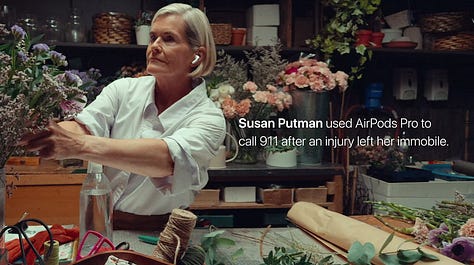My predictions: 10 Big Ideas for DTC in 2025
What data and trends are telling us about the future of Direct-to-Consumer brands.

Product marketing is undergoing a significant evolution, driven by advancements in AI, shifting consumer expectations, and the rise of immersive technologies. Recent studies show that brands leveraging these trends are seeing measurable improvements in engagement and customer loyalty, signaling a broader transformation across the industry.
It’s no longer just about selling, it’s about creating living experiences. Products will evolve, adapt, and resonate with consumers on deeply personal levels. Fueled by emotional connections, tech-driven interactivity, and co-creation, the next wave of DTC brands will redefine engagement and storytelling.
Here’s what’s coming:
Note: Links included for informational purposes only and are not paid promotions or affiliate marketing.
1️⃣ AI-enhanced product development.
AI will revolutionize product creation, analyzing consumer data to design offerings that hit the mark every time with shorter development cycles.
📌 Article: How AI is Changing Product Development.
🔦 Spotlight: Nora, a pillow designed to predict and address snoring.
2️⃣ Hyper-niche personas.
Forget broad personas like “Millennial Moms.” Enter micro-cohorts: hyper-specific, data-powered segments like “Latte-loving 30-something cyclists in Boston.”, making mass personalization scalable.
Breaking customers into smaller, behavior-based groups allows for smarter, more personalized approaches. For instance, coffee enthusiasts who repeatedly buy espresso pods might love a “subscriber-only” early access to new blends, while weekend shoppers might respond best to flash sales sent on Friday evenings. This kind of nuanced segmentation helps matching the message to the mindset, making every interaction feel more relevant.
📌 Study: Personalization and the battle for customer’s attention.
🔦 Spotlight: Jacquard has developed a neural network to to deliver hyper-personalized product messaging.
3️⃣ Product as content.
Your product becomes media. Several brands have successfully expanded into media creation, effectively becoming media companies themselves.
Red Bull: Beyond its energy drinks, Red Bull has established a huge media presence, producing high-quality content related to extreme sports, music, and culture. Their media house, Red Bull Media Network, includes magazines, TV channels, and digital platforms, all designed to engage their audience beyond the product.
Lego: The iconic toy company has ventured into film and television, most notably with "The Lego Movie," which was both a critical and commercial success. This move not only entertained audiences but also reinforced brand engagement and introduced Lego to new demographics.
Patagonia: Known for its outdoor apparel, Patagonia produces environmental documentaries and multimedia content that align with its brand values. This strategy deepens customer loyalty by resonating with consumers' environmental concerns.
Glossier: Starting as a beauty blog, Glossier leveraged its content platform to build a community and gather insights, eventually launching its own product line. This content-first approach allowed them to cultivate a dedicated customer base.
Now, turn that media into an interactive and entertaining experience. Embedded AR, gamification, and interactive features will turn every product interaction into a shareable experience.
By making the experience interactive and entertaining, it goes beyond traditional shopping or watching, creating something customers can genuinely enjoy.
📌 Article: The evolution of Shoppertainment.
🔦 Spotlight: Apple and their live product releases.









4️⃣ Immersive marketplaces.
DTC brands will build vibrant spaces on platforms like Roblox, Fortnite, and emerging 3D shopping worlds. Products will “live” in these spaces, creating dynamic showcases where browsing feels like play.
"Rather than just sell a product to a customer, brands can set up virtual worlds to host events where they can entertain, engage, and interact with a community of brand followers on a whole new level." – Steven Van Belleghem, customer-experience expert.
📌 Article: Extended reality (XR) allows for immersive customer experiences.
🔦 Spotlight: Shopify will enable their merchants to sell physical items in Roblox.
5️⃣ Emotion-based GTM.
Campaigns will focus on emotional arcs to mirror the storytelling in movies: intrigue, excitement, satisfaction. It’s not what the product does, it’s how it makes people feel.
📌 Article: 10 of the best brand storytelling campaigns.
6️⃣ Marketplace-as-a-Service.
Brands will launch white-label marketplaces for their ecosystems. Competitors, creators, and customers will collaborate in these spaces, amplifying exposure and generating new revenue streams.
📌 Article: The white-label ecosystem.
7️⃣ Products designed for virality.
Virality will be engineered, not accidental. Think collapsible travel mugs that fold with a satisfying snap or sneakers that change colors in UV light. Products will be designed to make TikTok audiences stop scrolling and start talking.
📌 Study: TikTok Virality Study.
8️⃣ Crowd-powered product ownership.
Customers will co-create and own the products they love. Using blockchain, brands will let fans invest in product launches, creating loyalty built on shared stakes and shared success.
📌 Case Study: How KikiWorld uses web3 for customer co-creation.
9️⃣ From communities to cults.
Hyper-passionate micro-communities will evolve into cult-level loyalty. Exclusive rituals, secret drops, and gamified perks will make customers feel like insiders. More than fans, they’ll feel like family.
📌 Article: Why brands need to be acting more like a cult and less like a brand.
🔟 AI-Powered Product Evangelists.
The next wave of influencers won’t be human. AI-generated personalities will authentically promote products, dynamically adapting their messaging to niche audiences and engaging customers across platforms, 24/7.
📌 Insights: 17 expert insights into the rise of AI Influencers.
The future of DTC is interactive, emotional, and adaptive. Products will no longer just exist, they’ll live and evolve, creating deeper connections with consumers at every touchpoint.
#BigIdeas2025






